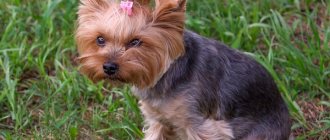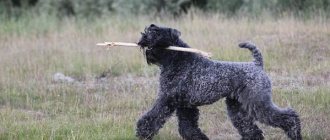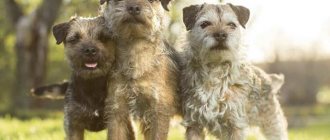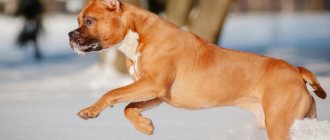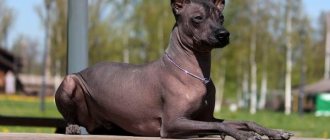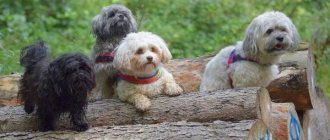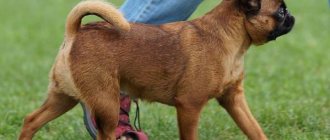Description of the Yorkshire Terrier breed
Popularity 19th among 263 dog breeds
Lifespan:
13-15 years old
Breed group:
Decorative
Height:
15-17 cm
Country of origin:
Great Britain
Average price:
20-30 thousand rubles
Weight:
1.7-3.1 kg
Latest articles Cat health
Rabies vaccination for cats: choice of vaccine, necessity, schedule 01/22/2022 4 0 0
Selection and adaptation
TOP 20 best cat breeds for families with children 01/22/2022 25 0 0
Price range
The cost of a purebred Yorkie depends on its class.
IMPORTANT!
A pet-class puppy can be purchased for 5-14 thousand rubles, the price for breed-class dogs starts from 15 thousand rubles, a show class representative will cost 15-70 thousand rubles or more.
Also, despite not meeting the breed standard, mini-Yorks are popular - such a puppy costs an average of 25 thousand rubles.
Advantages and disadvantages
- Pros:
- tiny size allows you to keep Yorkies in cramped apartments and take them with you almost everywhere;
- does not cause allergies due to the special coat;
- aesthetic appearance that can be embellished to your liking;
- insightful mind and good learning ability;
- no need for walking twice a day, as you can train the dog to use the litter tray;
- friendliness and sociability of the dog.
- Minuses:
- troublesome care, especially for wool;
- high cost of purchase and maintenance;
- the need for a strict diet;
- Not very good health of dogs.
How to feed?
The Yorkshire Terrier needs high-quality food.
NOTE!
If the choice is made in favor of branded food, it must be at least premium (for mini and micro - not lower than super-premium) and suitable for small breed dogs.
If the dog eats natural food, then feeding should be balanced.
Key facts
In recent years, Yorkshire Terriers have become very popular in the world, and this is not surprising. This adorable little companion dog is friendly, energetic and easy to keep even in a small apartment.
Brief characteristics of the Yorkshire Terrier breed - it is a brave, hardy and intelligent small dog, surprisingly delicate and intelligent. The male is usually larger in height and weight than the female. The height at the withers can reach 28 cm, but on average it is 17-20 cm.
York chooses a leader, whom he considers his master. He's a great friend to everyone else. York is an energetic playmate for children and a devoted and selfless companion for older people.
Small dogs live in country houses and small studio apartments. In training, the Yorkie grasps everything on the fly, but is restless.
Descriptions of the Yorkshire Terrier breed focus heavily on appearance. The beautiful fur of a Yorkie is his pride; it requires careful care, namely washing and combing. Making simple haircuts is easy for the owner himself. But it is better to entrust model haircuts or preparation for an exhibition to a professional groomer.
The Yorkie is very selective when it comes to food. Due to the breed's tendency to allergies, you should not treat your pet from the common table. It is best to feed your dog with properly selected balanced dry food.
Due to its tiny size, the Yorkie is prone to injury, so you need to be very careful about its health and active play. To purchase a purebred dog, you should contact trusted breeders. The life expectancy of a Yorkshire Terrier directly depends on care and timely treatment. With a good owner, the baby will live for 15 years, or even more.
Pet nicknames are invented by the owners, and the name in the pedigree is usually complex, consisting of several words. The name of the kennel comes at the beginning or at the end, if the kennel begins with a preposition (for example, “from the Yorkshire house”), and then the nickname itself consists of 1-2 words, and all names of the litter begin with a certain letter.
Despite its miniature size, the Yorkie has the character of a real terrier. The courage and devotion of this little one evokes genuine respect. The Yorkie is one of the most popular breeds in the world, adored for its appearance and disposition.
Baby teeth
Yorkie is 4 months old his baby teeth are starting to bother him . They will be replaced by permanent teeth before the age of one . It is at the age of 4 months that you should start monitoring your puppy’s jaw - play a lot so that the teeth loosen faster, examine the jaw daily for swelling and wounds.
Important! If you see that a molar tooth is growing on a baby tooth, then you need to go to the veterinarian.
History of the origin of the Yorkshire Terrier
The breed was developed in the British Isles. The country of origin is England, and specifically the county of Yorkshire. Its ancestors were small dogs with a hardy character and tenacious jaws - Scottish terriers. They were brought to Yorkshire by workers from Scotland who arrived to work in the mid-19th century.
It is not known exactly which of the many breeds of Scottish terriers took part in the development of the Yorkie. Presumably, one of the ancestors of the breed were Waterside Terriers, which protected peasant houses from rodents.
Interesting fact: peasants bred miniature terriers, since they were forbidden to keep large dogs in order to avoid poaching on the lands of the lords. The appearance of Yorkies has features of the Skye Terrier, Cairo Terrier, Manchester Terrier, Paisley Terrier, and they may owe their silky coat to the Maltese.
The name of the new terrier breed was coined in 1874, and the Yorkshire terrier was officially declared an independent breed in 1886 by the English Kennel Club. The breed standard, which is still relevant today, was adopted in 1898, although they began to be shown at exhibitions already in 1861 under the name “Hairy Scottish Terriers.” The heyday of the Yorkie's fame in Britain came during the reign of Queen Victoria, who adored dogs and instilled the custom of having pets among the ladies of high society.
In the USA, the American Kennel Club registered the first Yorkie in 1885, and a hundred years later in Germany, a new breed was developed from the Yorkshire terrier - the Biewer Terrier, which differed from the Yorkies in its black and white coat and was initially exhibited under the name "black and white Yorkshire terrier" .
The Yorkshire Terrier owes its appearance in Russia to the ballerina Lepeshinskaya - she received a puppy as a gift in 1971. The first Yorkie breeder registered a kennel in 1991 in Moscow's Mytishchi, and today there are more than 75 of them.
In the 21st century, the trend for Yorkshire terriers continues. They are among the ten most common breeds in the world, and in the United States, according to the American Kennel Club, Yorkies from 2006 to 2008. ranked second in popularity.
Pet health
Yorkshire Terriers cannot boast of good health.
Diseases characteristic of the breed include:
- hypoglycemia;
- gastrointestinal diseases;
- allergy;
- dermatitis;
- alopecia;
- cataract and glaucoma;
- kidney disease;
- breathing problems;
- hernias
Yorkies often experience eye injuries and the fontanelle not overgrowing.
Similar dog breeds
Shih Tzu
Maltese
Cavalier King Charles Spaniel
Lhasa apso
Bichon Frize
Briefly about character and temperament
Yorkshires are distinguished by their courage, balance and always good spirits. These dogs are affectionate and loving: they simply adore their owners and are ready to do anything to please them.
Yorkies are smart and quick-witted: they are willing to learn and train.
If it were not for their small size and fragility of build, it would be difficult to find a more suitable breed for sports, for example, agility: after all, Yorkshires are hardy and passionate, like all terriers.
It is the latter circumstance that makes them the “stars” of numerous shows and exhibitions: the Yorkie loves and knows how to show himself in the best light.
These dogs, if raised correctly, do not cause problems: they get along well with other pets and with children, but if necessary, they can also turn out to be good guards.
They also love to accompany their owners everywhere - from going to the store to traveling around the world.
The affectionateness of Yorkies also has the other side of the coin: these dogs are very dependent on their owners and do not tolerate loneliness very well..
Read more about the character of Yorkies here.
Appearance of the Yorkshire Terrier
General impression
Long-haired, compact and agile dog, with evenly falling hair, parted from nose to tail. The body is strong and proportional. In the photo of the Yorkshire Terrier, the assertive and open character of the dog is immediately noticeable.
Head
The Yorkie's eyes are shiny, non-protruding, straight-set. Eye color – dark brown, with dark eyelids, expression – intelligent. Small vertical ears are not very far apart and are covered with intense red short hair. Scissor bite, with vertical, close-fitting canines.
Neck
Quite long, with flowing hair and even parting.
Torso
Compact, almost square, with a flat, strong back and a clearly defined loin.
Forelegs
With pronounced shoulders, straight elbows, evenly covered with golden hair. Red-brown color is allowed up to the knee joint.
Hind limbs
Straight in front, in profile the knees are moderately pronounced, the coat is long, with a lighter tone at the ends. The red-brown color, as on the front legs, should not extend above the knee. With round paws and black claws.
Tail
The tail is usually docked in the middle, or may not be docked. The dog carries it just above the line of the back. The fur on the tail is darker the closer to the end it is.
Movement
Free with a good pace, limbs do not twist, the step is even. The dog gives the impression of a nimble and swift animal bred for hunting.
Wool
The hair on the body is straight, thin, silky, without wave. The hair on the head and ears is long. The Yorkie has no undercoat and does not shed, because the hair, like human hair, grows from one bulb.
Color
Puppies' coat is usually black and brown. With growth, the black color degenerates into a steel-blue color, and the brown color becomes lighter. By the age of 1.5 years, the Yorkie takes on its usual color. Steel blue wool should be free of impurities. It is located on the back. The fur is reddish-brown in color, darker at the roots and lighter towards the tips. Occasionally, red-legged Yorkshire terriers are born - this happens when the puppy's coat does not become bluish-brown with age, but remains black-reddish. This is called "return". All of the listed Yorkshire Terrier colors are recognized by international standards.
Size
The height of a Yorkie is not stipulated by the standard; the main thing is proportions. But the weight is clearly indicated by the standard - up to 3.1 kg, but for breeding dogs weighing from 1.7 to 2.8 are preferred.
Kinds
The standard type of Yorkshire Terrier was discussed above. Experts also identify less popular varieties, such as the Biewer Yorkie. It was developed by the Germans in the 80s. It is distinguished by larger dimensions, an elongated neck and a different coat color.
Biewer fur 3-color. There are black, white and light brown hairs on its body. There may be golden veins on the muzzle. A representative of this breed is distinguished by stronger bones and a developed musculoskeletal system.
The Biewer Yorkie is easily distinguished by its tricolor color.
There is another variety of Yorkie that differs from the standard - the Shoko-York. The main feature of this dog is its bright fur the color of melted chocolate. She is very beautiful and pleasant to the touch. An important requirement for a representative of the breed is that the color on its body must be uniform.
For gourmets, specialist breeders have bred the third representative of the breed - the Mini Yorkie. It differs from the standard one only in its smaller size. The weight of this dog should not exceed 2 kg. Very rarely, so-called super-mini Yorkshire terriers are born. Their weight is 1.5 kg.
Personality of the Yorkshire Terrier
Who is the Yorkie suitable for? The Yorkshire Terrier has a very friendly personality and gets along well with other animals and children. Miniature dogs are very attached to their owner, at home they enthusiastically protect the owner’s property, and on the street both the puppy and the adult dog vigilantly watch their leader and are very worried if they suddenly lose sight of him.
In winter, the Yorkie often freezes outside, so he walks in warm overalls, or goes to the toilet at home. York Terriers are very brave and curious dogs, real little hunters.
There are fleas: what to do
Most often, fleas attack Yorkshire terriers in the spring and summer. The dog begins to behave restlessly, itches, wounds and abrasions, excrement and insect eggs can be found on the skin. During bathing, fleas migrate to the head or neck area, where they can be found. After this, it is necessary to urgently take measures to eliminate the parasites. For this purpose, chemicals, collars, shampoo and drops on the withers are used. The fight against fleas should be comprehensive - carpets, furniture should be treated and the entire house should be wet cleaned.
Education and training
Yorkshire terriers are smart, their training does not pose any problems, but they need to be trained from early childhood. Socialization of the pet plays a big role. Some owners don’t know how to raise him, are afraid to introduce him to other dogs and don’t let him get away with it. Such puppies subsequently grow into cowardly, hysterical dogs, frightened by every rustle. Gradually, it is necessary to expand the puppy’s horizons and geography of walks, introducing him to strangers and dogs, walking in unfamiliar places. If you gradually socialize your pet, he will grow up to be a balanced, well-mannered dog.
With teaching commands, the situation is somewhat more complicated due to the stubbornness and restlessness of the Yorkie. How to start raising and training a Yorkshire Terrier? You can contact an instructor or do it yourself. Yorkies willingly perform exercises, but training should be short, with mandatory rewards in the form of praise and treats, and then there will be no problems with learning commands.
How to stop a dog from being a bully? If you catch your Yorkie in the act of a crime - the puppy is chewing on a slipper, digging up a rose bush or tearing off the wallpaper - punish him immediately. If you decide to scold him a couple of hours after the hooliganism, the baby will not understand why you are unhappy with him. Be strict, but never resort to cruelty.
Yorkies love routine, so walking and feeding should be carried out according to a schedule. In terms of toileting, dogs are easy to train to a tray or diaper, which is very convenient for people who have difficulty walking their dog due to health or a busy work schedule.
Yorkshire Terriers often become anxious at the sight of moving objects, such as cars and bicycles. How to stop them from being nervous in noisy traffic? Only by immersion in such an environment. To do this, you need to visit crowded places with your puppy during walks. If your Yorkie is not taught to travel in a car or other vehicle from an early age, there is a chance that he will get motion sickness. This will cause inconvenience to both the owner and the dog himself.
Looking for a Yorkshire Terrier? Find your pet from 1 offer As a gift
Starting to raise a Mini Yorkie puppy
Usually babies go to new owners from a breeder at the age of 2-3 months, without having the skills to carry out the owner’s commands. In the first months of a baby’s life without a mother, patience, perseverance and affection are needed in upbringing.
You cannot shout at the animal or raise your hand . You need to affectionately ask to give a paw, sit or lie down, and if the command is successfully completed, reinforce the knowledge with a treat.
Yorkie will quickly understand when he can get a tasty snack and will try. If the child does something wrong, speak in a stern tone, but calm, without aggression.
Important! Learn commands with your pet such as “Ugh!”, “No!”, “Place”, “Nearby” - this is the minimum required for future walks with the dog. Since all dogs love to pick up anything they miss from the asphalt, it is important to teach the puppy these commands.
Yorkshire Terrier Health and Diseases
The life expectancy of Yorkies is 12-15 years. What are the most common diseases a small terrier can encounter during his life?
- hypoglycemia (low blood sugar);
- neurodermatitis (neurogenic-allergic skin disease that becomes chronic);
- cancer;
- injuries.
Small puppies are predisposed to hypoglycemia - a sharp drop in blood sugar. This is a very serious problem and the dog can go into a coma. Symptoms of hypoglycemia are drowsiness, weakness, convulsions, and a sharp drop in temperature. If you see at least one of these symptoms, you should immediately go to the veterinarian, after rubbing the dog’s gums with syrup or honey. By 4 months, puppies outgrow this threat; hypoglycemia is uncommon in adult dogs.
Cancer is common among Yorkies. According to research, it most often affects females over 10 years of age. To reduce the risk of cancer and give your dog a couple of years of life, it is better for her to have sterilization at 6-7 years old if she is being bred, and around the year if pregnancy, gestation and childbirth are not planned. Bitches come into heat once every 6-12 months.
Due to their size, Yorkshire Terriers have fragile bones. To avoid joint injuries, you should not allow your dog to jump from heights or exercise in uncomfortable and potentially dangerous places. In the apartment, you should take care of the correct arrangement of furniture and the removal of unstable, heavy objects.
Yorkies are susceptible to allergies and stress. The apogee of these conditions is neurodermatitis, which has a very negative effect on the coat. The first remedy in the treatment of neurodermatitis is a change in the environment and regime of the dog. In severe cases, doctors prescribe melatonin.
Yorkshire Terriers are temperature sensitive. In hot weather they easily overheat, and in cold weather they often freeze. In muddy and bad weather, it is better to pack the dog in waterproof overalls to make grooming easier.
Mini Yorkies (weighing 1.7 kg or less) are sicker than their standard counterparts. Their life expectancy is also shorter, only 7-9 years. Micro specimens weighing less than a carton of milk have an even shorter lifespan, 3-4 years. Yorkies are not prone to obesity, but if this happens, the dog will have to be put on a diet or low-calorie food and increase the amount of physical activity.
Reproduction and lifespan
Small dogs often live longer than large ones. The Yorkshire Terrier faithfully serves its owner from 13 to 15 years. There are individuals that live up to 16 years. The breeder must be well aware of the standard of this breed. Dogs that meet the following requirements should be selected for mating:
- Their ears are V-shaped and stand erect.
- The coat is straight, very smooth (and if the dog has not been cut, then curly).
- Their weight should not exceed 3 kg.
- The male and female must be sexually mature - no younger than 1 year and no older than 7 years.
On the 3rd day of estrus, the bitch can be taken to the male. He will sniff her and begin to try to woo her. Sometimes, due to her health worsening during menstruation, the bitch can push him away. Then the breeder will have no choice but to postpone their mating.
The birth of a female Yorkie should be performed by a professional, as it is often problematic. The mother dog is very affectionate and caring. She must feed her offspring for at least 1.5 months.
Features of feeding and diet
The most pressing questions that arise immediately when purchasing a puppy are what to feed and how to feed it.
An adult Yorkie usually has 2-3 feedings per day. Don't worry if there is food left in the bowl - the dogs themselves know how much to eat. Your veterinarian can tell you what food to feed, but it is better to choose high-class dry industrial food. You can also feed homemade food, but calculating the norms is quite difficult. Under no circumstances should you treat your Yorkie to fried and fatty foods, smoked meats, and sweets.
If you want to switch your dog from one food to another, it is better to do it gradually, replacing part of the portion with a new food, otherwise your picky Yorkie may refuse food altogether. The number of treats per day should also be limited.
First vaccinations for Yorkie puppies
Yorkies begin to be vaccinated at the age of 2 months, but it is possible at 2.5 months . This most often occurs when puppies are weaned from their mother and their immune system is not protected by the mother's Yorkie's milk.
Important! The dog is dewormed within 10 to 14 days, so there should be no walks outside. Walking is possible only after the second vaccination.
Vaccination is done only if the dog is healthy. After 3 weeks, a second vaccination is given .
Maintenance and care
When you take a puppy into your home, ask the breeder for some item from the mother's house - a diaper, a toy, a scrap. It will be easier for a baby separated from his mother and brothers to bear the separation if there is an object with the smell of home nearby.
Immediately you need to put the bowls and toilet in a permanent place. You need to put a sunbed in a warm place in the room. It is better not to take a puppy into your bed, no matter how pitifully he whines for several reasons:
- he will get used to sleeping with you, and it will be difficult to kick him out of bed in a week;
- the puppy is small, and you can easily injure him in a dream;
- he has not yet learned where the toilet is in the new house, and can use your bed as it;
- your bed is too high for your puppy; if he decides to jump off, he could break or dislocate his leg.
The puppy needs to be vaccinated.
The first vaccinations are done at the breeder. Before each vaccination, deworming is necessary - prevention against worms. The last rabies vaccination is given, and after it you can start walking with your pet. The first walks are best taken for 10-15 minutes, gradually increasing to 30-60 minutes. An adult Yorkie should be walked 2-3 times a day. Yorkies need to have their nails trimmed, ears and teeth cleaned regularly. Not all dogs like these procedures, so the owner must be persistent. If you cannot overcome the dog’s resistance, you can go to grooming salons, where haircuts are also done. Perhaps this is the most difficult part of caring for and maintaining a Yorkshire Terrier; otherwise, he is unpretentious.
Claws are trimmed once every 2-3 months as they grow. It is good to cut them after bathing, when they are softened. You cannot cut the claw at the root, as there are vessels nearby. Ears are cleaned as they become dirty. The oral cavity requires special attention. Yorkies' teeth are a weak point; without care, by the age of three they become loose, and a 5-7 year old dog may turn out to be completely toothless. This negatively affects the dog’s life and the functioning of the digestive tract. Therefore, teach yourself and your puppy to perform oral hygiene regularly, using special products from a veterinary pharmacy.
The fur of the Yorkshire Terrier is a special matter. If your Yorkie is long-haired, you need to bathe it weekly; short-haired ones can be bathed a couple of times a month. Brushing should be done at least once a day - this will help prevent the fur from becoming tangled.
Washing is carried out at a temperature several degrees colder than body temperature (in dogs it is about 38.5 degrees). In the bath, you need to make sure that the dog does not slip and that water does not pour into his ears. Pet stores sell special shampoos for Yorkie fur - it is better to use them to avoid allergies. After washing, you need to dry the dog with a towel and comb it. For hygiene purposes, you can trim the hair on the ears, around the paw pads and butt.
Table of Yorkie weight changes by month
If puppies are fed properly, they should gain weight every day. For the first two weeks we weigh the Yorkies every day, then once every three days.
| Newborn puppy weight (g) | 70 – 80 | 85 – 115 | 120 – 130 | 135 – 155 | |
| 1 month | 1 Week | 105 – 115 | 140 – 185 | 190 – 230 | 150 – 270 |
| 2 week | 140 – 185 | 185 – 200 | 285 – 310 | 350 — 380 | |
| 3 week | 170 – 200 | 225 – 310 | 370 – 400 | 450 – 500 | |
| 4 week | 190 – 230 | 270 – 370 | 450 – 480 | 540 – 600 | |
| 2 month | 5 week | 230 – 255 | 310 – 425 | 480 – 550 | 620 – 680 |
| week 6 | 255 – 310 | 355 – 500 | 560 – 620 | 680 – 760 | |
| week 7 | 285 – 340 | 410 – 550 | 620 – 700 | 750 – 851 | |
| 8 week | 312 — 369 | 450 – 600 | 680 – 760 | 820 – 930 | |
| 3 month | Week 9 | 340 – 425 | 500 – 650 | 730 – 820 | 900 – 990 |
| 10 week | 370 – 450 | 540 – 700 | 800 – 870 | 960 – 1070 | |
| 11 week | 390 – 480 | 590 – 765 | 870 – 960 | 1040 – 1200 | |
| 12 week | 420 – 530 | 620 – 850 | 930 – 1050 | 1160 – 1270 | |
| Week 13 | 450 – 570 | 680 – 900 | 1020 – 1130 | 1240 – 1380 | |
| 4 month | Week 14 | 480 – 620 | 730 – 960 | 1100 – 1250 | 1330 – 1470 |
| Week 15 | 540 – 650 | 800 – 1050 | 1150 – 1300 | 1450 – 1600 | |
| Week 16 | 570 – 710 | 850 – 1100 | 1270 – 1390 | 1530 – 1670 | |
| Week 17 | 600 – 730 | 870 – 1160 | 1300 – 1450 | 1600 – 1750 | |
| 5 month | Week 18 | 620 – 800 | 930 – 1220 | 1350 – 1530 | 1700 – 1850 |
| Week 19 | 650 – 820 | 960 – 1250 | 1400 – 1600 | 1750 – 1900 | |
| Week 20 | 680 – 850 | 990 – 1300 | 1450 – 1650 | 1800 – 2000 | |
| 21 weeks | 700 – 880 | 1000 – 1350 | 1530 – 1700 | 1870 – 2050 | |
| 6 month | Week 22 | 710 — 900 | 1050 — 1400 | 1580 – 1750 | 1930 – 2100 |
| Week 23 | 740 – 930 | 1070 – 1400 | 1600 – 1800 | 1980 – 2200 | |
| Week 24 | 740 — 950 | 1100 – 1450 | 1650 – 1850 | 2000 – 2200 | |
| Week 25 | 760 – 950 | 1100 — 1480 | 1660 – 1870 | 2040 – 2240 | |
| Week 26 | 760 – 970 | 1100 – 1500 | 1700 – 1900 | 2070 – 2300 | |
| 1 year 6 months | 900 — 1200 | 1350 — 1800 | 2040 – 2300 | 2400 – 2800 | |
The numbers given in the tables are approximate and are given as a guide for the owner to understand that the Yorkie puppy is being fed correctly and is not overfed, or worse, is he underweight.
Yorkies grow from 14 to 23 cm , adults weigh from 1.3 kg to 3 kg .
If the animal is larger, then the weight may be greater. The veterinarian will help determine whether the dog is overweight and will tell you how to adjust the diet so that the pet remains cheerful and happy.
Advice! The approximate weight of an adult dog can be calculated by multiplying the weight of a two-month-old puppy by 3.
Tips for choosing a puppy
If you want to buy a healthy and beautiful Yorkie, you need to find a good nursery that engages in breeding. A good breeder will give advice on all issues, and will also take an interest in your living conditions: he does not care which home the puppy ends up in. There is a queue for a good breeder, and he is looking for the best hands for his baby.
The owner of the kennel must show you the mother and a photo of the father, or vice versa if the puppy is alimony.
The puppies already have puppy cards, a kennel mark (a tattoo of numbers and letters on the stomach or ear), and a veterinary passport with partially completed vaccinations, and their parents have RKF-FCI pedigrees or, in extreme cases, SKOR. If you plan to participate in exhibitions, it is better to take a puppy from the RKF kennel.
If you don’t know how to choose a puppy, ask the breeder to advise you. He will help you make a choice in accordance with your ambitions (whether you want to go to exhibitions or just need a companion). Yorkshire Terrier puppies from the same litter can vary greatly in price depending on what class each baby belongs to - pet, breed or show.
You should not look for puppies on free message boards - there are a lot of scammers and outbids who post other people's photos, sell puppies with fake documents, and it is not even a fact that these are Yorkshire terriers. Sometimes they are underfed in order to be sold at a higher price as Mini Yorkies. How can you spot a scammer?
- The puppies may have documents from federations registered in Moscow at Krasnobogatyrskaya, 2.
- The cost will be slightly lower than for puppies in trusted nurseries.
- The reseller will never show you the puppy's mother.
- He has many puppies of different breeds (more than five).
- The puppies themselves look unhealthy and are in poor conditions.
- Resellers answer your questions briefly and reluctantly.
It’s also not worth buying an animal from them because the puppies are often sick. Having saved on the purchase, you will then pay a large amount for the treatment of the dog, and it’s good if it stays alive.
Nutrition
The issue of organizing a menu for such a pet should be approached very responsibly. The stomach is its weak point, therefore, from improper nutrition, the animal can get sick and even die. It is important that your Yorkshire Terrier puppy eats a balanced diet.
His food should be varied, fresh and of high quality. It should be fed 5, or preferably 6 times a day in very small portions (100-150 grams). When he turns 5 months old, he should be switched to 4 meals a day, and when he turns six months old - to 3 meals a day. He should eat protein products, mainly of animal origin:
- Meat.
- Eggs.
- Milk.
- Butter.
- Cottage cheese.
Also in its menu it is necessary to include boiled buckwheat, semolina porridge, vegetables and fruits. Sometimes the dog can be pampered with meat broth or fish, but without bones. What should not be given to a young or adult representative of the breed? Firstly, pork. This meat contains many parasites, moreover, it is difficult to digest and assimilate.
Secondly, sweets, any kind: cakes, pastries, biscuits, sweets, etc. Thirdly, some raw foods, especially eggs and potatoes. If you are afraid of making a mistake and giving your dog something that could harm it, we advise you to play it safe and completely switch it to a ready-made diet. Yorkies do well with dry food for small dogs.
How much does a Yorkshire Terrier cost?
The price of a Yorkshire terrier with all documents depends on the region, but the average cost is from 20,000 to 60,000 rubles. For puppies of titled parents, the seller can ask more than 100,000 rubles.
You should not buy a puppy without a pedigree, because the metric is not a piece of paper for exhibitions, but a guarantee that you will grow up a Yorkshire terrier with the correct exterior and character, as you imagine it from photographs and pictures on the Internet. If you want to buy a Yorkshire terrier inexpensively and are not going to make a champion out of your pet, it’s better to look in different nurseries; there are puppies with defective exteriors, for example, in color or bite, which will be given to you at the price of dubious dogs without a pedigree.
Do you like the article? 0
Color variations
The color of the standard Yorkshire is two-tone - steel gray with reddish fawn. At the same time, the head and neck to the withers have a rich reddish-brownish tint, the chest and paws are golden with an ashen coating, and the body, tail and limbs are painted in a steel-gray color.
But there are many more color varieties of the Yorkshire Terrier, among which are the following:
- beavers;
- biro;
- Golddusts;
- chocolate;
- monochrome black and white.
There are also crosses of Yorkies with other dog breeds - representatives of designer breeds. Read about them here.
What do boys and girls look like and how do they differ?
Like other breeds, Yorkie boys look very impressive and impressive, while girls look more graceful and gentle, and are a pleasure to look at!
Also, their head may visually look somewhat smaller in proportion than that of males.
If in other breeds of dogs boys are usually larger, then in Yorkies this is ambiguous: even among individuals of standard size, a female can be larger than a male, which sometimes creates difficulties in breeding these dogs.
Main types of colors
Beaver
It has a bright, white-black-red color and a black nose, while the proportional ratio of colors can be any: along with beavers, which have a white color with small spots, there are also individuals whose main color could be called, rather, black.
However, it is the light-colored dogs that are most popular..
Biro
It is colored white-brown-red, the location of the spots and their size may vary.
There are also almost brown biros that have a slight tan and small white markings (shown in the photo).
The nose of Biro Yorkies is brown in various shades.
Goldust
The main color of the coat is golden-fawn of various tones.
May be supplemented with small white markings.
Chocolate or choco
Its color can be any of the brown tones: from light brownish to dark chocolate.
There may be some small white markings and tan, but its color is not the deep red of the Biro, but rather a pale brown.
Black
The color of his coat should be intense black.
Small white markings are acceptable, such as a white “tie” or “socks”, as well as a narrow blaze on the forehead.
White
Such dogs are very rare (shown in the photo).
Ideally should be snow white.
The eyelids, nose and edges of the lips are only allowed to be black, and the eyes should be as dark a brown shade as possible.
